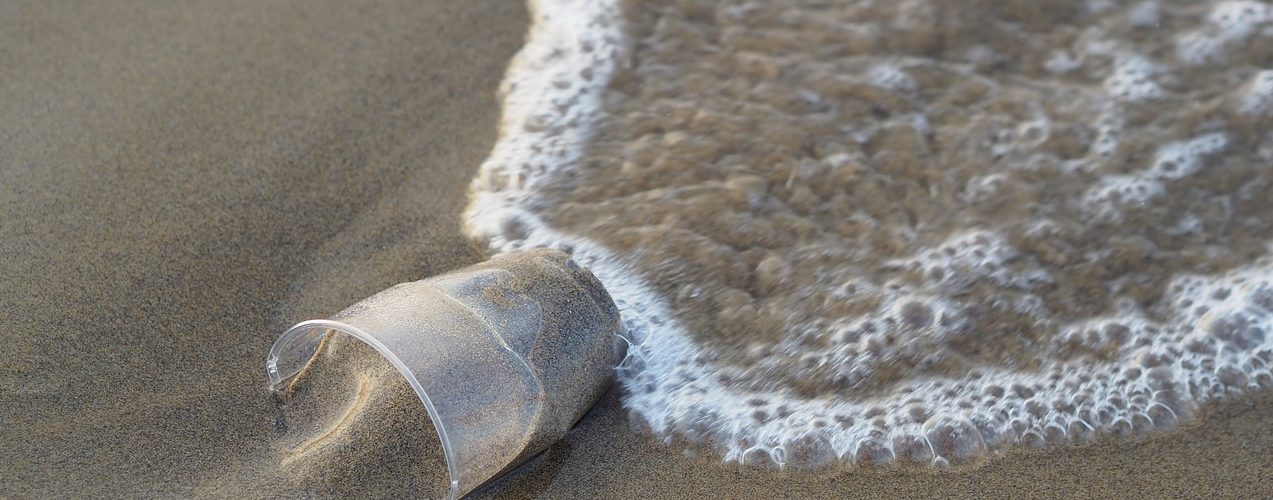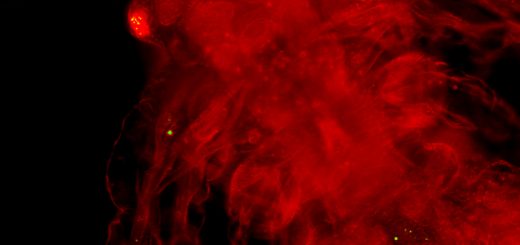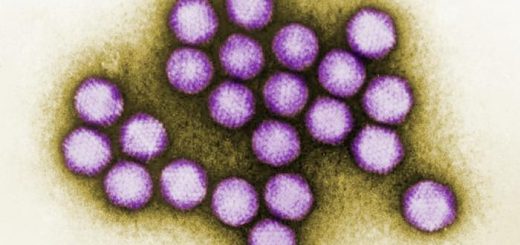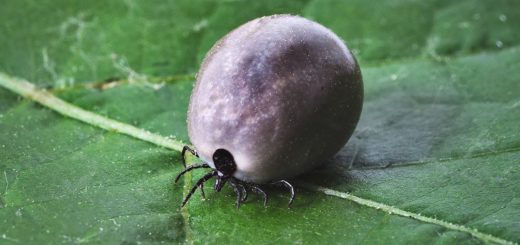Have You Ever Thought To Go Plastic-Free?

The Age of Plastic
We are living in the ‘Age of Plastic’. Almost everything made by humans has at least one plastic component: electronics, clothing, weapons, cooking tools, vehicles, etc…
Is it so surprising that plastic is everywhere in our life? Probably not. Derived from natural substances, such as coal and crude oil, plastic is incredibly malleable owning to its unique chemical structure. You can distinguish seven different types of plastic by looking at the triangle surrounding a number imprinted on the plastic object, known as the resin identification code.1
Thanks to their chemical composition and specific characteristics, these types of plastic are either more or less toxic and hence, suitable for a specific use – for instance, some are microwave safe, used for food storage, takeout food or takeaway coffee.
The fact that plastic is so easily shaped is one of the main reasons for its success; you can create almost any sort of tools or objects. At the same time, its best characteristic is also a curse. Because of its chemical composition, it can take up to 1000 years for some types of plastic to degrade! 2 We have been consistently producing plastic since 1950, and this trend shows no signs of stopping. A study done by Professor Roland Geyer and collaborators at the University of California estimated that 8300 million metric tons of virgin plastics (not made using recycled materials) have been produced until 2017.3 We probably do not realise how much plastic is produced, used and wasted and how little we recycle, yet the results from Geyer’s research indicate that only an estimated 9% of plastics are recycled.
Although we collect all the different type of plastics that can be recycled in the same garbage bin in our backyard, they must be sorted before starting the recycling process because of their slightly different chemical composition that makes them incompatible. Therefore, it is the role of recycling centres to differentiate, wash and melt all the collected plastics to produce tiny pellets that are then put to further use.4 The most efficient way to recycle plastic is to make the same product again. This way, we reduce the amount of virgin materials being sourced – we use less crude oil, reduce greenhouse gases, and save energy that otherwise would have been used – the circular economy concept.5
The Two Journeys of Plastic
If we recycle only 9% of all the plastic we waste, then where is the rest of it? Most of the plastics end up in a landfill or in the ocean. If the landfill properly isolates the plastic, we avoid releasing toxic substances into the environment, such as ammonia, toxic metals and industrial waste. Failure of this process results in water-soluble toxic substances leaching into groundwater and streams, poisoning the surrounding ecosystem. The ocean journey is also harmful to the environment and animals; ocean currents, called gyre, trap and accumulate all the plastic pieces in specific areas known as garbage patches. The Great Pacific Garbage Patch, located halfway between Hawaii and California, is almost as big as France and is increasing in size every year. The Indian Ocean, North Atlantic, South Atlantic and South Pacific Garbage Patches have extended the list, and their enormous size has earned them the title of the ‘seventh continent’.6
The Plastic Food Chain
Can you guess why it is so problematic to have plastic in the ocean? First, animals confuse plastic for food, eat it, feel full and starve to death. Newspapers reported several cases of dead fish or birds with their stomachs full of plastic.7 In turn, the other problem is that plastic has entered the food chain! Not all plastic types are biodegradable and some of them will never degrade. Hence, they keep breaking down into smaller pieces – called microplastics. Following the classification of the National Oceanic and Atmospheric Administration (NOAA), the size of microplastics ranges from 1
If these facts do not ignite worried feelings, how about the latest news of 83% of tap water worldwide being contaminated with microplastics10, or even 93% of bottled water?11 Perhaps, you are left wondering how toxic the tap water is due to the presence of microplastics. Well, this currently remains unknown. However, it has been shown that microplastics can interact with and carry toxic and cancerogenic compounds.12 Whether the concentration of microplastics and the compounds they carry is at a level that is harmful to humans is not yet clear and remains to be investigated further
How to Save the World one Plastic Bottle at a Time
After the seemingly endless list of bad news, let’s see what is being done to save the world. During my research, I have come across many organisations that are trying to do something about plastic pollution and many of them are focusing their efforts on cleaning the oceans. The SeaBin project invented floating sea bins able to collect garbage from the sea, using a submersible water pump to attract debris.13 The Manta, also known as the Sea Cleaners, is a vessel powered by several renewable technologies able to collect all the macroplastics from the ocean that are manually sorted from other debris and compacted in 1m3 bales.14 These catamarans also carry an audio emission system that will prevent fishes and cetaceans from being accidentally captured. This system could clean polluted zones that are normally inaccessible, and the first catamaran is expected to be operative in 2022.15 One of the biggest projects is the “Ocean Cleanup” that claims it will clean up 50% of the Great Pacific Garbage Patch in 5 years.16 It consists of a number of 600-meter-long floaters with a 3-meter-deep extension able to collect the plastic thanks to its U-shape. The collection system is completely passive, meaning that it does not require energy. In an ingenious way, Boyan Slat, CEO and founder of the Ocean Cleanup, designed the system to be carried by the currents together with plastics. However, wind and waves affect the system more than the plastic, propelling the collection system to move faster, thereby capturing the plastic waste. Once the plastic is collected in the centre, a vessel will remove it every few months to be then processed and sorted for recycling in specific centres on land.
All of the efforts mentioned aim to collect macroplastics, leaving behind all the small pieces. So, what about microplastics? While it is currently not possible to filter microplastics in the ocean, we can filter our tap water. Unsurprisingly, after last year’s reports on contaminated tap and bottled water, the concern about microplastics has risen and companies started to sell filters that remove microplastics. However, only the most expensive technologies claim to be able to filter microplastics down to one nm. Others filter microplastics down to 200–5000 nm, so they can only partially purify the water. Hence, there is still much work to be done in developing these technologies.
Encouragingly enough, the European Parliament has recently approved a plan to ban single-use plastic objects, such as plates, cutlery, straws, balloon sticks or cotton buds, from the European market from 2021.17
Nature Needs YOU!
This article has discussed some of the problems with plastics and what some organisations are doing to tackle them. However, if you are asking yourself what more we, as concerned individuals, could do, then the first thing that comes to mind is to start reducing the amount of plastic that we are using. Small daily actions, such as using edible bubbles containing water, buying shampoo or bath soap without a plastic container, looking for plastic-free stores and, of course, recycling, all contribute to tackling the issue surrounding plastics.
Pollution is widely known to be a great threat to our world, so it is astonishing to read that the EU minimum recycling target is only 22.5%.18 I think we can do a lot more than that! Next time we buy and use plastic – only because we lack alternatives – let’s be sure to recycle it because our actions have profound consequences on the entire ecosystem. Even if we live in the age of plastic, I dare to ask you: have you ever thought to go plastic free?
This article was specialist edited by Jonathan Bowes and copy-edited by Maisie Keogh.
References
- https://en.wikipedia.org/wiki/Resin_identification_code
- https://4ocean.com/blogs/blog/how-long-does-it-take-trash-to-biodegrade?gclid=CjwKCAjwwo7cBRBwEiwAMEoXPIb6CViu6FIikmgKD2cBD_3dAIaV54gDy89QqnK4isgPrR1HEHrwWBoChkkQAvD_BwE
- http://advances.sciencemag.org/content/3/7/e1700782.full
- http://www.sita.co.uk/individuals/what-happens-to-waste/recycling/plastic/
- http://www.carbonliterecycling.com/about/
- https://www.livingcircular.veolia.com/en/eco-citizen/seventh-continent-plastic
- https://www.bbc.co.uk/news/science-environment-44579422
- https://oceanservice.noaa.gov/facts/microplastics.html
- https://en.wikibooks.org/wiki/Cell_Biology/Introduction/Cell_size
- https://orbmedia.org/stories/Invisibles_plastics/
- https://tappwater.co/en/how-to-filter-and-remove-microplastics/
- https://www.ncbi.nlm.nih.gov/pmc/articles/PMC5918521/
- http://seabinproject.com/the-product/
- https://www.theseacleaners.org/en/the-manta/
- https://www.swissinfo.ch/eng/business/pollution_how-to-clear-the-ocean-of-plastic–with-a-giant-sailing-boat-/44037874
- https://www.theoceancleanup.com/
- http://www.europarl.europa.eu/news/en/press-room/20181018IPR16524/plastic-oceans-meps-back-eu-ban-on-throwaway-plastics-by-2021
- http://www.epro-plasticsrecycling.org/pages/75/epro_statistics










